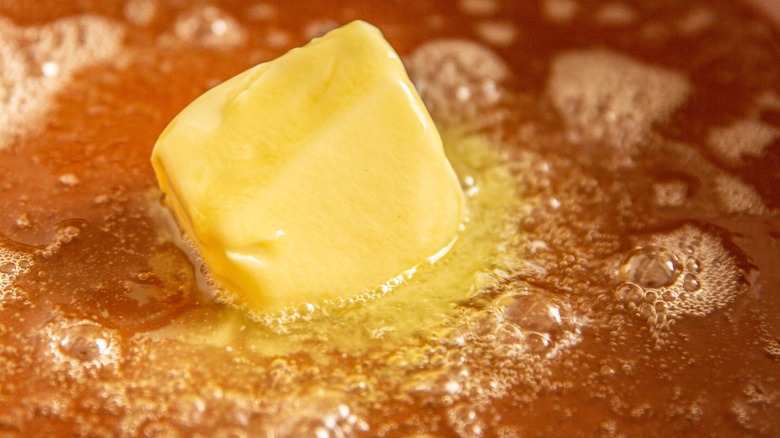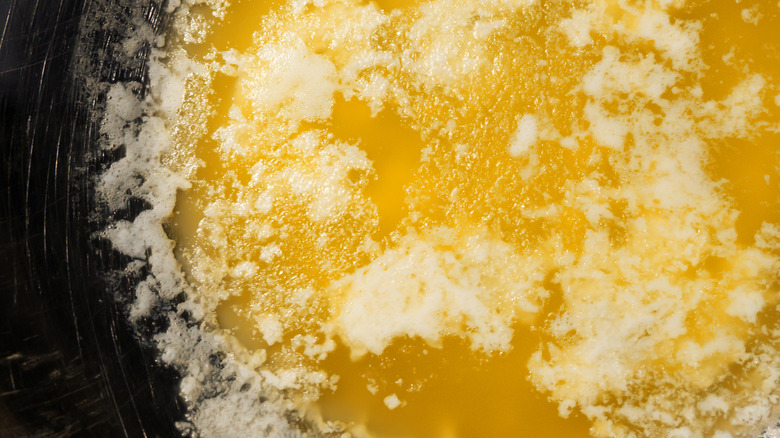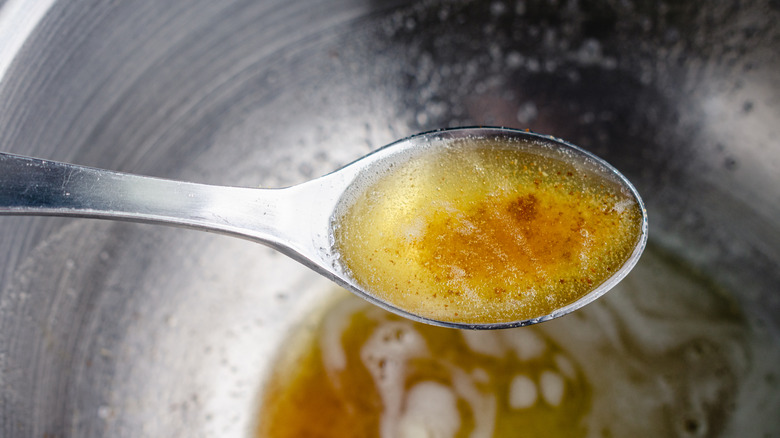You Shouldn't Bother Browning Salted Butter. Here's Why
In theory, browning butter is a simple way to enhance the flavor of any recipe that already calls for butter. You let it melt in a pan, and soon after, it develops a distinct nuttiness. Sounds easy, but in practice, browning butter isn't exactly foolproof. For starters, as Seasoned Cooks points out, the heat can't be too high, or else the milk solids will burn, and you'll end up with an unpleasant bitter flavor instead.
But despite how crucial the temperature is, low heat still isn't a guarantee for perfect browned butter. If you don't pay attention to the smell and appearance, or even use the wrong type of pan, you can burn it just as easily. Per Land O' Lakes, it's best to stick to a stainless steel or ceramic-coated skillet, because the browning process is far easier to monitor against a light-colored background. Most importantly, however, you'll want to make sure to start off with the right butter.
What happens when you brown salted butter
When you brown butter there's a chemical reaction called the Maillard reaction that takes place, America's Test Kitchen explains. Triggered by the evaporation of water, the Maillard reaction causes the amino acids and sugar in the butter to brown and form new flavor compounds. This occurs whether you use salted or unsalted butter.
The salt content of the butter doesn't change whether browning occurs, but it can make the process more challenging. The main reason, The Baltimore Sun points out, is that salted butter is more prone to burning. It also produces more foam, Cook's Illustrated notes, which blocks your view of the butter, preventing you from seeing the color change and the milk solids to ultimately determine the doneness. If you manage to successfully brown it, salted butter creates deceptively bigger browned bits, but only because the salt sticks to the milk solids. So while it may appear that way, salted butter unfortunately doesn't produce more toasted milk solids.
Unsalted butter produces a better flavor
For most recipes, salted and unsalted butter can be used interchangeably. If you manage to taste a difference, chances are it's only the salt. A stick of salted butter has 1/4 teaspoon of salt added to it, while unsalted butter has none at all, Food Network shares. When it comes to browning butter, however, the changes in flavor are a lot more noticeable.
The unique flavor of browned butter actually comes from the toasted milk solids, Cook's Illustrated explains. When the salt from the salted butter sticks to the milk solids, according to Seasoned Cooks, it neutralizes the nutty, toasty flavor you normally get from browned butter. Even though browned butter made with salted butter tends to look browner due to the fact that the salt and milk solids form bigger particles, the flavor is actually less pronounced. If you want browned butter that is both browner and stronger tasting, Bon Appétit recommends mixing your butter with powdered milk, since it's just dry milk solids. But using salted butter, contrary to what you might assume, won't produce comparable results.


